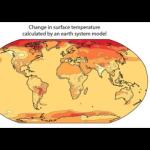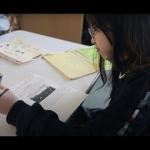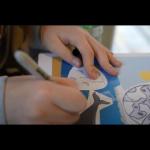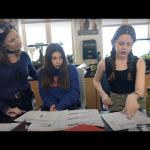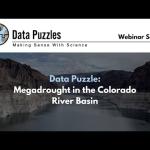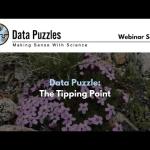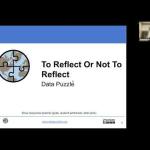Professional Learning
This recording captures the Nov. 13, 2024 Data Puzzle webinar focused on the Wind Farms of the Future lesson in which students analyze mean wind speeds and land surface ‘roughness’ datasets to explore the best locations for wind farms.
How To Videos
This video can be used a stand along video to learn more about fire ecology, or as part of the wildfire Data Puzzles lessons.
Recorded Science Talks
Science Show and Share
This recording captures the Oct. 2, 2024 Data Puzzle webinar focused on the Not All Warming is Equal lesson in which students analyze global temperature and carbon dioxide datasets to explore the inequities of climate change. Please find the landing page and slide deck referred to in this recording below:
How To Videos
A 'Behind the Puzzles' piece, which illustrates the goals and process of a study tracking flowering times of alpine species of plants. Interview provided courtesy of Dr. Meredith Zettlemoyer of the University of Montana's Plant Ecology Lab.
Science Content Video
In this video, middle school science teacher Erin Mayer describes how she engaged her students with the Eliciting Students' Ideas practice in the context of the "Tracing Carbon Through the Arctic Food Web" Data Puzzle. Note that Erin used this Data Puzzle as part of a larger learning expedition (unit).
How To Videos
In this video, middle school science teacher Erin Mayer describes how she engaged her students with the Identifying Important Science Ideas practice in the context of the "Tracing Carbon Through the Arctic Food Web" Data Puzzle. Note that Erin used this Data Puzzle as part of a larger learning expedition (unit).
How To Videos
In this video, middle school science teacher Erin Mayer describes how she engaged her students with the Constructing Evidence-Based Explanations practice in the context of the "Tracing Carbon Through the Arctic Food Web" Data Puzzle. Note that Erin used this Data Puzzle as part of a larger learning expedition (unit).
How To Videos
In this video, middle school science teacher Erin Mayer describes how she engaged her students with the Supporting Ongoing Changes in Thinking practice in the context of the "Tracing Carbon Through the Arctic Food Web" Data Puzzle. Note that Erin used this Data Puzzle as part of a larger learning expedition (unit).
How To Videos
In this Data Puzzle, students will engage with an interactive reading before analyzing authentic datasets to discover how and why the number of megafires has changed over time
How To Videos
This recording captures the Feb. 21, 2024 Data Puzzle webinar focused on the Snow in the Rockies lesson in which students analyze snowfall and timing of snowmelt datasets from Colorado's East River Watershed and reflect on how changing snow conditions in Rocky Mountain watersheds like the East River Watershed might impact downstream water users (e.g., Colorado River water users). Please find the landing page and slide deck referred to in this recording below:
How To Videos
Declining water levels in two of the largest reservoirs in the United States, Lake Powell and Lake Mead, provide visible evidence for the ongoing megadrought (a period of extreme dryness that lasts for decades) in the Colorado River Basin. Scientists studying weather and climate in this region are analyzing temperature and precipitation patterns over time to determine the root cause of the ongoing megadrought.
How To Videos
In this Data Puzzle, students engage with an interactive reading before analyzing and interpreting authentic datasets to discover that rising temperatures increase the reproductive success of moss campion up to a certain point, the tipping point, beyond which the plant's reproductive rates dramatically decline! The results of this study inspire many other interesting questions, What does this mean for the rest of the tundra ecosystem? And what other climate "tipping points" should we be aware of?
How To Videos
In this Data Puzzle, students analyze and interpret authentic data to trace the amount and type (ocean algae vs. sea ice algae) of carbon-based fat in Arctic animals to determine whether the animal's diet is more dependent upon ocean algae or sea ice algae and ultimately make predictions about how Arctic organisms large and small may be impacted by the decline in sea ice.
How To Videos
In this Data Puzzle, students will engage with an interactive reading before analyzing authentic datasets to discover how and why the number of megafires has changed over time.
How To Videos
This recording captures the Jan. 31, 2024 Data Puzzle webinar focused on the To Reflect Or Not To Reflect lesson in which students analyze Arctic sea ice and albedo datasets to explore the Arctic amplification phenomenon. Please find the landing page and slide deck referred to in this recording below:
How To Videos


